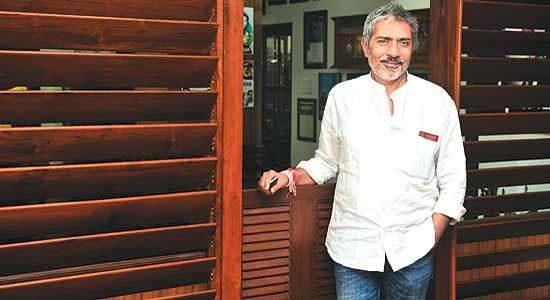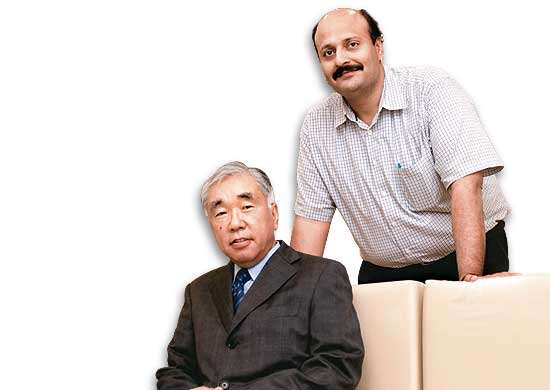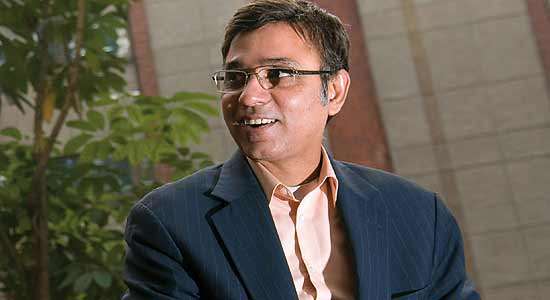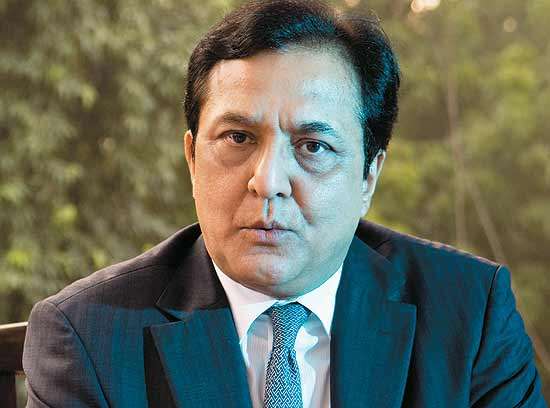Dr Pervez Ahmed, the CEO and MD of Max Healthcare, has vastglobal experience in the healthcare sector. Dr Amit Kapoor, Honorary Chairman of the Institute for Competitiveness and Professorof Strategy at Management Development Institute, caught up withhim to get some insights on the healthcare sector in India.
What are your views on the current scenario in Indian healthcare?
Most of the growth in healthcare in India is in the private sector, and specifically in 20- to 30-bed private nursing homes. Large, corporate multi-specialty hospitals are a small segment of private healthcare. A lot of unstructured and unregulated growth is happening because there is a big demand-supply gap.
Today, India has close to 1 to 1.5 beds per 1,000 people. If you look at even the lowest ratio of beds per 1,000 people, in big countries it is 2.3, while in developed nations it is at least 7.7 beds per 1,000 people. From an infrastructure perspective, we need about 100,000 beds over the next five or 10 years to come to the 2.3 per 1,000 level. This is about $80 billion to $100 billion of infrastructure growth.
The healthcare industry has seen huge development in India, and is currently growing at 26% per annum. Even tier-II and tier-III cities have a reasonable number of people who are in an economic position to avail private healthcare facilities. Max Healthcare itself is growing at the rate of 16-18%. Unfortunately, when you look at statistics like maternal mortality, infant mortality or lifespan, the indices in India are dismal. Also, depending on which part of the country you are in, so are the healthcare provisions. Even if you look at what are considered the best Indian states in terms of healthcare like Kerala or Maharashtra, their facilities are nowhere close to western standards.
Do you think there is a significant increase in the number of small nursing homes because of the lack of a regulatory environment in healthcare?
There is a burgeoning number of small nursing homes, but they fill an important gap. I am not against small nursing homes, but it is important in any kind of profession to have a regulatory environment where quality and safety is maintained.
There should be a semblance of regulation in healthcare, simply because we are in the business of taking care of patients and our work needs to be done in a safe environment. Many people are providing healthcare without necessarily providing the “right” care. This is not beneficial to the patient. This is also the reason why you see great opportunities in alternative medicine in India. Patients are not happy with the outcomes of allopathic care and shift to alternative therapies, where again regulations are not in place. India needs to develop benchmarks and regulations and this drive has to be through healthcare organisations, be it surgeons, physicians or societies.
You are doing well in the healthcare sector with eight hospitals and are now coming up with another four. How do you see competition shaping the healthcare industry in India?
There are three types of competition that exist—large, corporate multi-chains as a group; small, 40-50 bed hospitals; and the third, which is hardly looked at, is the changing paradigm of how government hospitals are treating patients. The infrastructure at government hospitals is improving and this will lead to more competition.
Delhi has a population of 17 million, of which only 3 million have access to private healthcare. Therefore, the pool of people who can pay for private healthcare is limited. If, for some reason, more people are able to pay for private healthcare services, the paradigm will change completely. I am afraid we do not have sufficient beds to take care of that need.
Customers or health insurance companies would have a choice between a 30-bed, 100-bed, corporate or public hospital. I feel that competition is steeper where there is a limited supply of patients as opposed to a competition scenario where the supply of patients is increasing.
Max Healthcare’s 4Cs
Customers
- Customers able to afford high-quality healthcare.
- In the next 30-40 years, India will deal with an ageing population, rising emphasis on disability access, etc.
Competition
- From corporate multi-chains, small hospitals and government hospitals.
- Limited supply of patients increases competition.
Context
- Increase in health insurance leading to ease of access to health services.
- Low focus on prevention of diseases.
- Lack of skilled manpower.
Company
- Create environment where people focus on hospital, not doctor.
- Innovation-centric, while still being conservative in some locations.
- Patient-centric care.
The Five Forces Model for the Healthcare Industry
1. Industry competitors
- Large, corporate multi-chains.
- Small 40–50 bed nursing homes.
- Government hospitals
2. Potential entrants
- Increasing number of small nursing homes
3. Suppliers
- Doctors
- Medical equipment
4. Substitutes
- Self medication
- Alternative medicines (ayurveda, homeopathy, etc.)
Customers
- Urban vs rural
- Tier-I cities vs tier-II and tier-III cities
- High income vs low income
Max Healthcare’s Principles of Operation
- Focus on positive patient outcome.
- Patient is at the centre of things rather than a procedure.
- Providing highest quality of medical and service care at lowest cost.
- Culture of learning and improvement.
- Everything defined and measured—financials, outcomes, customer satisfaction, etc.
- Move from episodic to lifetime care.
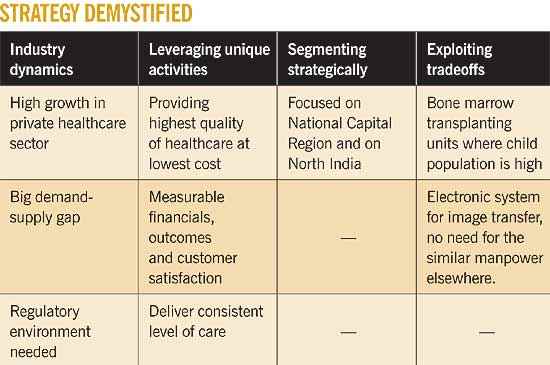
Has increasing health insurance changed the rules of the game?
As it stands today, there is up to 7% penetration of health insurance depending upon which part of the country you are in. Our health insurance patients in the NCR are 30% of the total.
Our repertoire of products is 70% cash-pay and 30% health insurance. Three to four years back, the share of health insurance was 15%.
Rather than life insurance companies providing health insurance, there is going to be a growth in the number of pure health insurance companies. With that growth, the population will be able to easily access healthcare.
How are you trying to differentiate your brand today from other big corporate hospitals?
We follow an excellence pathway that has three verticals. We believe in clinical excellence, while being recognised as having service excellence. Our key differentiators are in providing the highest quality of medical and service care at the lowest cost.
When you talk about providing healthcare, a doctor cannot work 25 hours out of 24. If there are 5,000 people who need treatment, you cannot have the same doctor attending to them. You need to create a system that is able to deliver a consistent level of care, regardless of the person providing it. That is our short-, medium- and long-term goal—to create an environment where a person comes to Max, not for a specific doctor, but to get the best health facilities.
You must be able to motivate and inspire. The most important quality of leadership is to be able to take quick and focused decisions.
While taking strategic decisions, it is often important to decide not to do a certain set of things. What are the tradeoffs that Max has made?
We have some facilities like bone marrow transplant units, only in a location where the paediatric population and clinicians are more. There is no reason to set up these units in two different places.
We have a well-trained radiology station in one location and we use an internal electronic back system that transfers images from one hospital to another. This way, you don’t need to have the same kind of manpower in different places.
You need some technologies that are cutting edge and while they may not actually give us a return on investment as rapidly as we would like, the tangible benefit that comes out of that for the other departments is very valuable.
You are talking about two things here—integrated practice units (IPUs), which is how hospitals get managed, and innovation. Can you tell us more?
Innovation and healthcare can be looked at in different ways. One is technology. Here one could be in a space where cutting-edge technology adds and compliments existing programmes. The other is emphasis on clinical research and education. For example, a group of our doctors, in collaboration with Imperial, are doing research on the genetic makeup of South Asians to study why we have diabetes, which puts us in the innovation space.
Plus we look at something like why diabetics have pain in their feet, which is primary research. Our clinicians become recognised by their theories and for the contribution they provide through primary research.
This gives us the right intellectual pool of capital, and adds to the growth and clinical excellence of our department. At the same time, we are shifting and putting a lot of focus on what we call patient-centric care—the patient is the centre of things rather than a procedure.
The Indian academic fraternity is considered to be behind the times in published research. How do you see yourself overcoming this challenge?
Traditionally, the private corporate healthcare sector has never looked at medical research because education and research require funding.
What we have done so far in the Indian private side has been collaborative research, which is either industry sponsored or big-clinical department sponsored. That’s a funding source, but that doesn’t actually stimulate and create the research faculty that is required. One has to actually get into what is called investigative research, which in India today is primarily conducted by government institutions. This is a concept that needs to change because any institution should be able to grant application for research.
If we promote research as a group and organisation, then we have an opportunity to come up with new molecules and devices, and new things that can work here, which can be manufactured cheaper.
What are some of the concerns in the healthcare sector at present, on the business side?
One big concern is lack of skilled manpower. It may sound somewhat strange in a big country like India. On the clinician side, we have many older people or a lot of young people, but the mid range is missing, though eventually the young people will fit the middle bracket.
Second is the lack of infrastructure, and I don’t mean hospitals. Somebody asked me if it is difficult to get people from abroad to come and work in India. The salary levels in India or elsewhere are the same, but what makes it difficult to get qualified people from outside the country is that we can’t provide basic infrastructure facilities like schooling, power and water. These are extremely important for young professionals looking to relocate with their family.
How would you define the challenges you have faced in building a good brand image for Max Healthcare?
The most important challenge that I have had is to bring about a change in attitude. It’s a cultural shift; people should understand that healthcare is a process of learning. Most people think that measurement is a process of primitive actions. If we measure an adverse event, then the person should lose their job. I was surprised when people told me that one out of every 10 people who are admitted into a hospital around the world has an adverse event. It’s frightening. It could be a minor or a major adverse event, like losing a limb or a wrong part being operated on.
The attitude of people should change. To make people understand that the culture of the organisation is to learn and improve, rather than use primitive actions, takes time, and is a constant process. Once you achieve that, the question of implementation arises. It’s about measuring it, improving it, doing it in a timely fashion and in addition, you should do it in a safe and efficient manner.
When all of these things are done in the right way, you end with a good result. We, in Max Healthcare, started emphasising on managing the process rather than just picking the process.
How is this quality measured as well as implemented?
Max has a system wherein everything is defined and measured. Whether you look at financials, outcomes, or customer satisfaction, everything is measurable. We try to make a sincere attempt that whatever we do has a positive effect. If that is not happening then we focus on how we can go back and fix it, rather than focus on a person’s faults. That’s a change and I feel that this is the biggest differentiator from our competition.
Sometimes it’s difficult because you need to constantly innovate, provide product changes, and look at what is better for the population at large. We move from what is called episodic care to lifetime care, by adding prevention and wellness as a major compound of healthcare.
In the healthcare environment, one has to be extremely conscious of the cost of delivering. If we don’t utilise the right test for the right ailment, we are actually overusing our equipment.
So while we are making money, which is a great short-term strategy, this doesn’t work in the long-term.
Accreditation is of great value to hospitals that do not have systems in place. If you want to be in the real realm of excellence, you have to be beyond accreditation. Excellence is about process management; it’s about how the leadership thinks and works.
So what is your leadership mantra?
I think you have to be firm, yet just and fair to all employees. You must be able to motivate and inspire. The most important quality of leadership is to take quick and focused decisions.
It is good to remind ourselves about our vision and mission. My goal is getting everybody in sync with the goal of the organisation, because if you can get that process done, you can succeed.
Where do you see Max Healthcare in the next 10–20 years?
We are entering the undergraduate medical education and health sciences space. Currently, we are purely an NCR-centric organisation, but are coming up with three hospitals outside Delhi; thus we are expanding our presence in North India.
As a strategy, we don’t want to be the largest group, but be the best. I think we will be pretty happy with providing 4,000-4,500 beds.
There are two ways of looking at excellence. One is the economic way, where you focus on certain specialties that provide higher revenue and contribution margin, which becomes our focus, and tertiary care is a part of that. This gives us the short- and medium-range benefits. To ensure long-term sustainability, one needs to create centres of excellence and that requires scalability.
CEOs across India speak on strategy and leadership, in an exclusive series developed jointly by Outlook Business and the Institute for Competitiveness.
The stratspeak interaction was published with Outlook Business on November 27, 2010.



